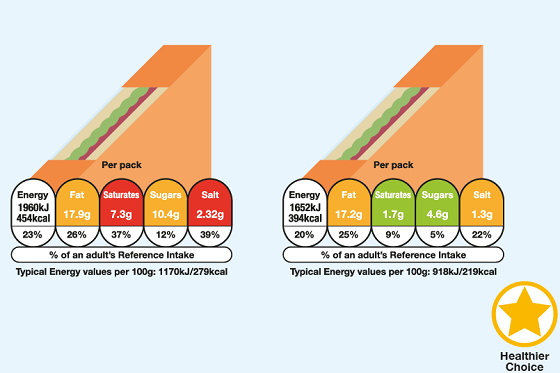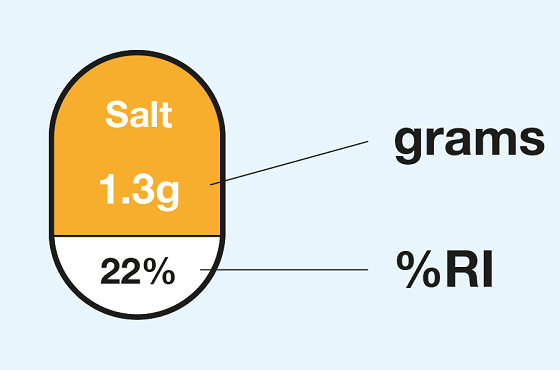Food labels made easy: there are a couple of easy methods to find out the nutritional value of packaged foods in the UK. Introducing Traffic Light and Reference Intake labelling.
Food Labelling & Dietary Guidelines

Traffic Light Labelling
Traffic light colour coding is put on food packaging by retailers, manufacturers, and caterers in accordance to the UK Food Standards Agency traffic light criteria. The traffic lights show whether an average serving of a food contains high (red), moderate (amber), or low (green) amounts of fat, saturated fat, sugars, and salt. This is because as a population we tend to eat too much of these nutrients in our diets.
Using the traffic lights system helps us to make healthier and balanced diet choices with ease, because we know that we should try to eat more foods labelled green and amber throughout the week for a healthier diet.
This doesn`t mean that foods labelled red are "˜bad` and should be avoided, but helps serve as a guideline to steer our food choices in the right direction. For example, for lunch if you have a food high in red for fat and saturated fat, try to choose a meal where fat and saturated fat are labelled green or amber for dinner.

Reference Intake Labelling
Reference Intakes (RIs) are values set out in EU law. They provide a guide to how much energy and nutrients we should consume each day for a healthy, balanced diet. They are not to be used as a target but as a guide, to help make balanced choices, as the exact nutrition needs of an individual vary depending on many factors including gender, age and activity levels.
RIs for kilojoules, kilocalories, sugars, fat, saturates and salt are provided on counter labels and food packaging as a daily guideline for healthy adults. Using RI guidelines can make it easier to put the nutritional content of your food into the context of your overall diet and can also be used to compare the nutritional values of different foods. This can be a big help when trying to make informed food choices for a healthy, balanced diet.
Micronutrients (vitamins and minerals) also have their own reference values however these are called Nutrient Reference Values (NRVs) and again they are a guide as to how much of each vitamin and mineral we should consume daily.
The table below shows the RIs and NRVs for the majority of nutrients:
|
Nutrient |
Reference Intake |
Nutrient |
Nutrient Reference Value |
Nutrient |
Nutrient Reference Value |
|
Energy |
8400 kJ/2000 kcal |
Vitamin A |
800ug |
Vitamin B6 |
1.4mg |
|
Fat |
70g |
Vitamin D |
5ug |
Folic Acid |
200ug |
|
Saturated fat |
20g |
Vitamin E |
12mg |
Vitamin B12 |
2.5ug |
|
Carbohydrate |
260g |
Vitamin K |
75ug |
Calcium |
800mg |
|
Sugar |
90g |
Vitamin C |
80mg |
Iron |
14mg |
|
Protein |
50g |
Thiamin (Vitamin B1) |
1.1mg |
Zinc |
10mg |
|
Salt |
6g |
Riboflavin (Vitamin B2) |
1.4mg |
Iodine |
150ug |
|
Fibre |
30g |
Niacin |
16mg |
Magnesium |
375mg |
